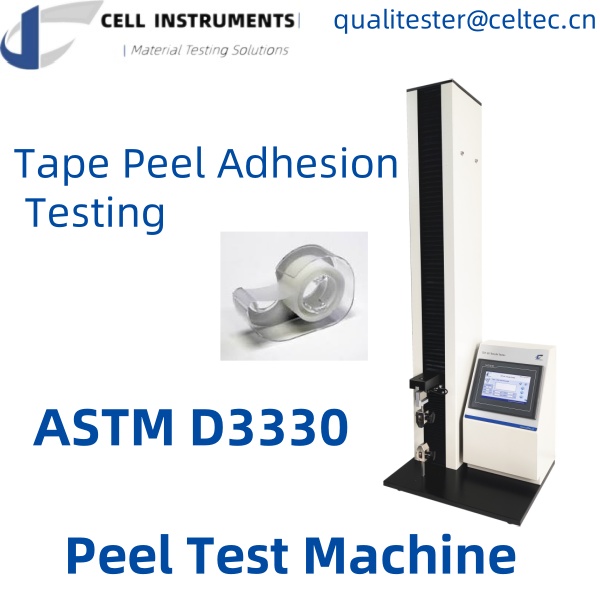Introdução
For material testing, the máquina de ensaio de casca stands out as a critical instrument for assessing the adhesion quality of various materials. It plays a pivotal role in industries such as packaging, pharmaceuticals, and adhesives, ensuring that products meet strict quality standards. This article delves into the functionalities, importance, and applications of the peel test machine, providing insights for those looking to enhance their quality assurance processes.
Understanding Peel Test Machines
What is a Peel Test Machine?
The peel testing machine is designed to measure the force required to separate two bonded materials. It is essential for evaluating the adhesive strength of tapes, labels, and other bonded materials, ensuring they perform as expected under real-world conditions.
Key Features of Peel Test Machines
Peel test machines, like those offered by Cell Instruments, are equipped with advanced features such as PLC control, HMI touch screens, and precision mechanisms that provide consistent and accurate test results. Their versatility allows testing of various materials, including plastic films, adhesives, and medical products.
Importance of Peel Testing
Why is Peel Testing Crucial?
Peel testing is vital for maintaining product integrity. It helps identify potential failures in adhesion before products reach consumers, reducing the risk of product recalls and enhancing brand reputation.
90° Peel Testing
180° Peel Testing
Applications of Peel Testing
Peel test machines are used extensively across various sectors, including:
- Embalagem: To ensure seals on packaging materials remain intact during transportation.
- Dispositivos médicos: To verify the reliability of adhesive bonds in medical applications.
- Têxteis: To assess adhesive strength in fabric lamination.
Tape Peel Adhesion Testing
Understanding ASTM D3330 Standards
Norma ASTM D3330 outlines the standardized method for tape peel adhesion testing. This ensures consistency and reliability in test results, allowing manufacturers to adhere to industry standards. Utilizing a peel test machine in accordance with ASTM D3330 ensures that products not only meet compliance but also perform reliably.
How to Perform Tape Peel Adhesion Testing
- Prepare Samples: Cut the adhesive tape and substrate to specified dimensions.
- Set Up the Machine: Load samples into the peel test machine, ensuring correct alignment.
- Conduct the Test: Run the machine to measure the force required to peel the tape from the substrate.
- Analyze Results: Collect and interpret data to assess adhesion performance.
Choosing the Best Peel Test Machine
Factors to Consider
When selecting a peel testing machine, consider the following:
- Faixa de teste: Ensure the machine can handle your specific sample sizes and strengths.
- Speed and Precision: Look for adjustable test speeds and high precision for reliable results.
- Compatibilidade: Ensure the machine supports the materials you intend to test.
Recommended Product
For optimal performance, consider the Cell Instruments Peel Test Machine. Its advanced features and compliance with ASTM standards make it an excellent choice for quality assurance in various applications.
Incorporating a peel testing machine into your quality control process can significantly enhance product reliability and adherence to industry standards. By understanding its functionalities and applications, manufacturers can better assure their product’s performance and safety.
Perguntas frequentes
- What types of materials can be tested with a peel test machine?
- The machine can test a variety of materials, including adhesives, plastic films, and medical plasters.
- How does a peel testing machine ensure accurate results?
- It uses precision mechanisms and calibrated settings to deliver consistent test outcomes.
- What is ASTM D3330, and why is it important?
- ASTM D3330 is a standard that specifies the method for tape peel adhesion testing, ensuring reliability and compliance.
- Can peel test machines be customized for specific needs?
- Yes, many manufacturers offer customizable options to meet specific testing requirements.
- How often should peel testing machines be calibrated?
- Regular calibration is recommended to maintain accuracy, typically every 6 to 12 months, depending on usage.


